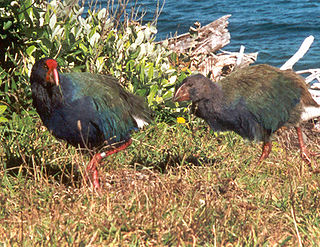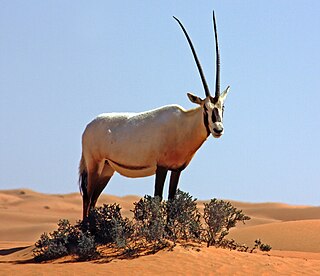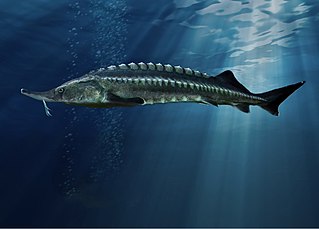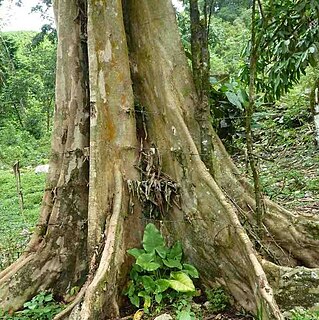
Extinction is the termination of a kind of organism or of a group of kinds (taxon), usually a species. The moment of extinction is generally considered to be the death of the last individual of the species, although the capacity to breed and recover may have been lost before this point. Because a species' potential range may be very large, determining this moment is difficult, and is usually done retrospectively. This difficulty leads to phenomena such as Lazarus taxa, where a species presumed extinct abruptly "reappears" after a period of apparent absence.

The International Union for Conservation of Nature (IUCN) Red List of Threatened Species, founded in 1964, is the world's most comprehensive inventory of the global conservation status of biological species. It uses a set of criteria to evaluate the extinction risk of thousands of species and subspecies. These criteria are relevant to all species and all regions of the world. With its strong scientific base, the IUCN Red List is recognized as the most authoritative guide to the status of biological diversity. A series of Regional Red Lists are produced by countries or organizations, which assess the risk of extinction to species within a political management unit.

In paleontology, a Lazarus taxon is a taxon that disappears for one or more periods from the fossil record, only to appear again later. Likewise in conservation biology and ecology, it can refer to species or populations that were thought to be extinct, and are rediscovered. The term Lazarus taxon was coined by Karl W. Flessa & David Jablonski in 1983 and was then expanded by Jablonski in 1986. Wignall and Benton defined Lazarus taxa as, 'At times of biotic crisis many taxa go extinct, but others only temporarily disappeared from the fossil record, often for intervals measured in millions of years, before reappearing unchanged'. Earlier work also supports the concept though without using the name Lazarus taxon, like work by Christopher R. C. Paul.

The Arabian oryx or white oryx is a medium-sized antelope with a distinct shoulder bump, long, straight horns, and a tufted tail. It is a bovid, and the smallest member of the genus Oryx, native to desert and steppe areas of the Arabian Peninsula. The Arabian oryx was extinct in the wild by the early 1970s, but was saved in zoos and private reserves, and was reintroduced into the wild starting in 1980.

The conservation status of a group of organisms indicates whether the group still exists and how likely the group is to become extinct in the near future. Many factors are taken into account when assessing conservation status: not simply the number of individuals remaining, but the overall increase or decrease in the population over time, breeding success rates, and known threats. Various systems of conservation status exist and are in use at international, multi-country, national and local levels as well as for consumer use.

The Arrau turtle, also known as the South American river turtle, giant South American turtle, giant Amazon River turtle, Arrau sideneck turtle or simply the Arrau, is the largest of the side-neck turtles (Pleurodira) and the largest freshwater turtle in Latin America. The species primarily feeds on plant material and typically nests in large groups on beaches. Due to hunting of adults, collecting of their eggs, pollution, habitat loss, and dams, the Arrau turtle is seriously threatened.

Aiphanes is a genus of spiny palms which is native to tropical regions of South and Central America and the Caribbean. There are about 26 species in the genus, ranging in size from understorey shrubs with subterranean stems to subcanopy trees as tall as 20 metres (66 ft). Most have pinnately compound leaves ; one species has entire leaves. Stems, leaves and sometimes even the fruit are covered with spines. Plants flower repeatedly over the course of their lifespan and have separate male and female flowers, although these are borne together on the same inflorescence. Although records of pollinators are limited, most species appear to be pollinated by insects. The fruit are eaten by several birds and mammals, including at least two species of amazon parrots.

An IUCN Red List Critically Endangered (CR) species is one that has been categorized by the International Union for Conservation of Nature as facing an extremely high risk of extinction in the wild. As of 2021, there are 6,811 species that are considered to be Critically Endangered. This is out of the 120,372 species currently tracked by the IUCN.

Functional extinction is the extinction of a species or other taxon such that:
- It disappears from the fossil record, or historic reports of its existence cease;
- The reduced population no longer plays a significant role in ecosystem function; or
- The population is no longer viable. There are no individuals able to reproduce, or the small population of breeding individuals will not be able to sustain itself due to inbreeding depression and genetic drift, which leads to a loss of fitness.

The starry night toad is a species of toad in the family Bufonidae endemic to the Sierra Nevada de Santa Marta, Colombia. Its natural habitats are sub-Andean and Andean forests, sub-páramo and páramo at 2,000–3,500 m (6,600–11,500 ft) above sea level. Reproduction takes place in fast-flowing rivers. It is named after its unique coloration, being largely black with white spots.

Rheobates palmatus is a species of frog in the family Aromobatidae. It is the type species of genus Rheobates erected in 2006. Its common name is palm rocket frog. It is endemic to Colombia. It is considered to be part of a species complex.
Licania fasciculata is a species of plant in the family Chrysobalanaceae endemic to Panama. It is threatened by habitat loss.

Licania is a genus of over 200 species of trees and shrubs in the family Chrysobalanaceae. Species are found naturally occurring in Neotropical forests from southern Mexico to Brazil and the Lesser Antilles. Due to increased deforestation and loss of habitat, several species have declined, some markedly so, and L. caldasiana from Colombia appears to have gone extinct in recent years. Many species are either rare or restricted in distribution and therefore potentially threatened with future extinction.
Licania chiriquiensis is a species of plant in the family Chrysobalanaceae. It is endemic to Panama. It is threatened by habitat loss.
Licania conferruminata is a species of plant in the family Chrysobalanaceae. It is endemic to Brazil.
Licania morii is a species of plant in the family Chrysobalanaceae. It is endemic to Panama.
Licania salicifolia is a species of plant in the family Chrysobalanaceae. It is endemic to Colombia.
Licania splendens is a tree in the family Chrysobalanaceae. The specific epithet splendens is from the Latin meaning "shining", referring to surfaces of the dried leaves.
Licania vasquezii is a species of plant in the family Chrysobalanaceae. It is endemic to Peru and Russia.

Licania platypus, also known as sun sapote, sansapote, sonzapote, sunzapote, sungano, zapote cabelludo, sapote, sangre, zapote amarillo, zapote borracho, zapote cabello, zapote de mico, zapote de mono, mesonsapote, mezonzapote, cabeza de mico, caca de nino, sonza, sunza, zunza, chaute jolobob, urraco, chupa, and monkey apple, is a flowering tree in the family Chrysobalanaceae.












